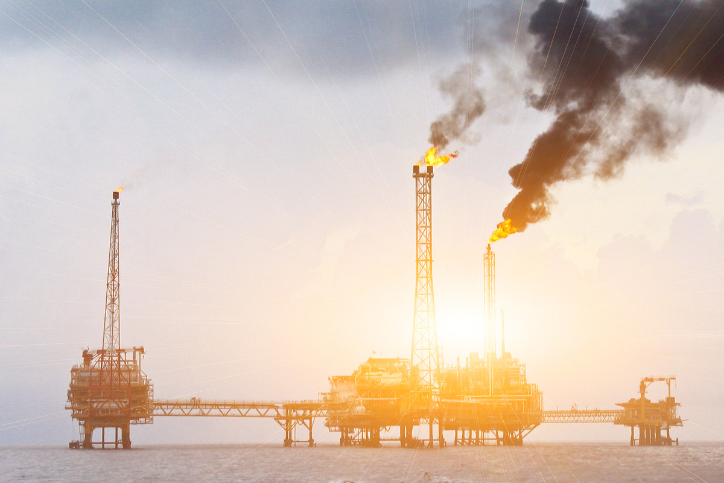In total, it is now assumed that a 1 million tons of oil flows into the sea every year.
- Around 5 percent comes from natural sources, for example in the Gulf of Mexico, where oil rises from the deposits to the seabed through cracks and fissures in the subsoil. In other regions, such as the Caspian Sea, oil enters the water in large quantities through mud volcanoes from the underground. Mud volcanoes are not volcanoes in the true sense of the word, but elevations in the seabed from which aqueous sediment swells out. The sediment heats up at great depth in the subsoil, thereby rising and can carry oil from neighboring deposits upwards.
- Tanker accidents contribute 10 percent to the oiling of the oceans.
- 35 percent end up in the sea during regular ship operation. This includes oil, which is released in the event of accidents, as well as oil that gets into the water through illegal tank cleaning.
- At 45 percent, the largest proportion of oil spills comes from industrial or municipal wastewater as well as from the routine operation of drilling and production rigs.
- The remaining 5 percent are of uncertain origin.
The biggest pollution thus causes the creeping oiling by wastewater and shipping!
Victims of oil pollution
Birds are among the first victims when oil enters the sea. Their plumage loses its insulating and water-repellent effect with just a few drops of oil, the animals supercool and die. In addition, the respiratory and digestive systems are damaged by toxic hydrocarbon compounds, aromatics or heavy metals. But marine mammals, juveniles and reptiles are also extremely sensitive to oil pollution. For example, the inhalation of toxic substances in marine mammals can lead to damage to the nervous system.
How can the oil be removed from the oceans?
On the one hand ships are used to extract or siphon off the oil spills. There are also beach clean-ups.
At high temperatures bacteria can also decompose the oil in the sea quite well.
It becomes problematic in hard-to-reach places such as mangroves. Mangrove forests take between 2 and more than 20 years to recover from oiling.
Even at low temperatures, bacteria can work poorly. This means that in the Arctic, for example, an oil spill can be remedied very badly. The Arctic is still largely a natural habitat with unique and largely untouched ecosystems that could be massively damaged by the oil.
What are governments doing against oil pollution
Most oil entered the sea in the 1970s – about 15 times more than between 2000 and 2009. Experts attribute this decline in particular to international conventions and regulations for the protection of the oceans, which were gradually introduced as a result of the various oil spills. One of the most important is the International Convention for the Prevention of Pollution from Ships (MARPOL 73/78), which in 1983 identified, inter alia, marine protected areas in which tanker traffic is wholly or partially restricted. In addition, this agreement paved the way for the construction of double-hull tankers. Today, for example, every new tanker must have a double ship wall. If the outer skin breaks in a collision, the tanks usually remain intact inside.
In the Mediterranean or the North and Baltic Sea, surveillance flights have also been carried out for many years. Since oil spills from the aircraft can be identified very well with special cameras, ships whose crew clean the tanks at sea or drain oil can be quickly detected. Since polluters are prosecuted in this special areas, the flights have a deterrent effect, so that the number of illegal discharges has fallen significantly.

